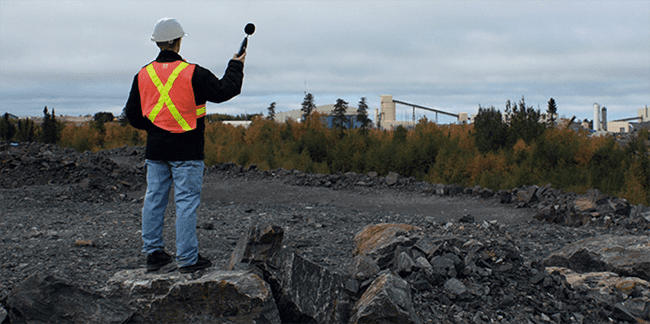What is the Difference Between an Acoustic Assessment and an Acoustic Audit?

Frequently Asked Questions in Noise, Vibration and Acoustics
Hi and welcome to this first edition of our new video series on Frequently Asked Questions in Noise, Vibration and Acoustics. I’m Rob Stevens, a Principal of HGC and in this video series, we answer the questions that we hear most often from clients or through inquiries at our website. And today’s question is: what’s the difference between an Acoustic Assessment and an Acoustic Audit?
What’s the Difference Between an Acoustic Assessment and an Acoustic Audit?
Now, right at the outset, I can tell a couple of things about this question from the wording. One is that it originates close to our head office in Toronto, Canada, and I say that because those two terms, Acoustic Assessment and Acoustic Audit, particularly if they’re written with capital letters, refer to two types of noise studies that are formally set out and defined in the environmental legislation and regulations in the province of Ontario, Canada.
And the other thing I know is that we’re talking here about noise to the outdoors from something like a manufacturing facility, refinery, petrochemical plant, a mine, something that has the potential to impact noise sensitive properties nearby, like a residence, school, hospital, hotel, or the like.
What is an Acoustic Assessment?
Now, an Acoustic Assessment is a type of noise study that’s normally done in advance of a construction and operation of some noise producing facility. It’s usually prepared to support approvals to construct or to operate. So by its nature, it’s predictive. It happens in advance. We can’t simply go out and measure the sound of the industry because it’s not constructed and operating yet.
Instead, we need to use some analysis and often what we call computational acoustical modeling. So we begin by working with the design team, obtaining the drawings and the equipment lists and information about all the operations and activities that are going to take place at the plant that could emit non-negligible amounts of noise to the outdoors. This could be for mechanical equipment like fans and pumps, compressors, cooling towers, or it could be vehicles that are bringing goods to and from the site.
But for each of those items of equipment or activities, we need to determine what its sound emissions are going to be. We may rely on manufacturers’ published sound levels in the case of mechanical equipment. We may use measured sound levels that we have on file from past projects of similar sorts of facilities. Or for typical equipment like pumps and motors we may be able to use estimation equations that are in published reference texts.
Building a Sound Source Inventory and Acoustical Model
We take all that information and we build a sound source inventory, and that inventory is the basic input information to an acoustical model, along with the geometry of the site, the surrounding topography and terrain. Any intervening structures like buildings and foliage, as well as the meteorology. Now, computational acoustical model is a lot like a 3D CAD model, but it has the capability to perform standardized analysis to determine and predict what are the sound levels going to be at some point of interest. It could be the property line of the facility. It could be at the point of reception on the neighboring sound sensitive properties, whatever the regulator or the authority defines as the applicable noise limit.
Now, if that analysis says we’re anticipating excesses over the noise limits, well, then we need to use that acoustical model to determine what the dominant noise sources are, rank them and establish how much noise control and what noise control measures might be required in order to meet the applicable noise limits.
And we work with the design team to incorporate those noise control measures into the design of the facility. Now, the final step in the process is usually the preparation of a report that demonstrates compliance with the noise limits for review by a regulator or other authority.
What is an Acoustic Audit?
On the other hand, an Acoustic Audit, unlike an Assessment, is a type of study that’s normally done after the facility is up and operating.
So it’s sort of an as built check or real life verification that the noise from the facility is what we expected it to be in the Acoustic Assessment or, more importantly, that it meets the applicable noise limits. So unlike an Assessment, we have the advantage that we can actually measure the real sound emissions of the facility.
Measuring Sound Levels of a Facility Directly
And in the simplest case, we can go to the location where the noise limit applies, whether that’s the fence line of the facility, or at the point of reception at the neighboring residences, for instance, and just measure the sound levels of the facility directly and compare those to the applicable limits. In many cases, though, we have to take additional steps to reject interfering background sound that could be from other industry in the area, could be from road traffic, air traffic, rail, could also be natural sounds, birds, insects and the like.
Why think about noise early in the design process?
So those are the two types of studies, again, you know, Acoustic Audit, we would finish that with a report that hopefully demonstrates compliance of the facility with the noise limits. Now you may hear other terminology in other jurisdictions. Instead of an Acoustic Assessment, you may know it as a Noise Impact Study, Predictive Noise Impact Study, Noise Impact Statement, or an Environmental Noise Impact Statement.
For an Acoustic Audit, you may know it as an Acoustic Performance Verification, or Qualification Test, but basically these two types of studies are very common, and you’ll see them just about anywhere you go. The final thing I’ll mention, particularly in the case of an Acoustic Assessment, is that it’s very important and valuable to think about noise and noise mitigation early in the design process. It’s always more cost effective and acoustically effective to build the mitigation measures into the design process early than it is to try and fix a noise problem after the facility is up and operating.
So that’s our question for today, if you have a question you would like to see us answer please reach out.



